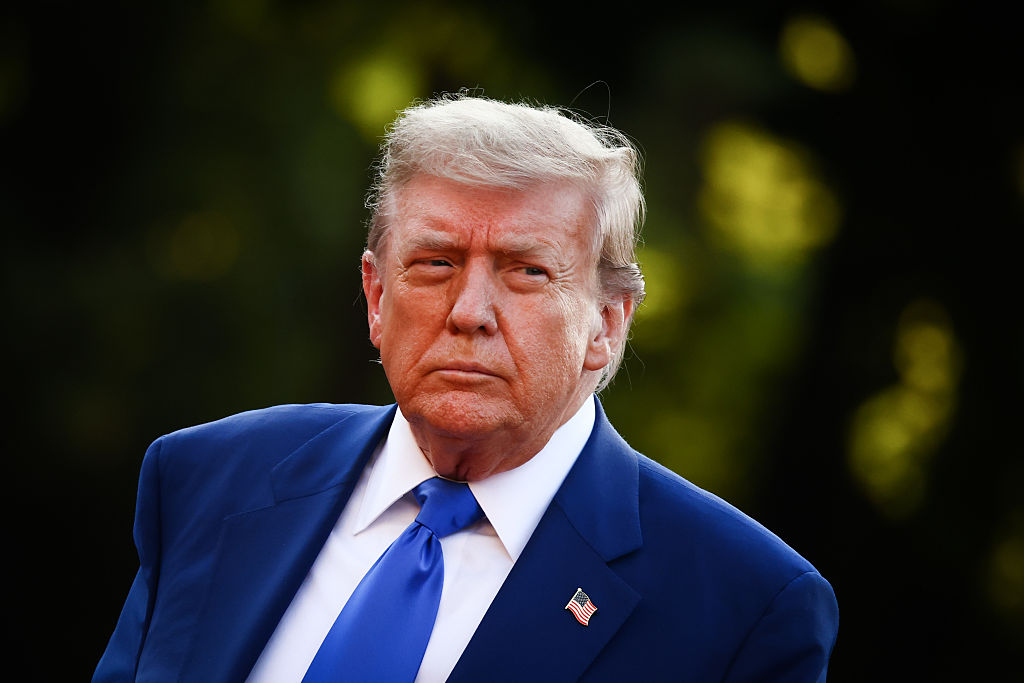Currency Corner: what’s next for the mighty US dollar?
In today's Currency Corner, Dominic Frisby looks at the US dollar's frustrating grind higher over the last year or so, and asks where it might go next.

I'm really interested in the US dollar at the moment. Gosh! Where's it going?
HSBC is bullish: the bad news is priced in and further downside is limited.
Citibank, however, is bearish: domestic data is not good and is going to get worse, interest rate cuts are coming, and the US president wants a weaker dollar.
Subscribe to MoneyWeek
Subscribe to MoneyWeek today and get your first six magazine issues absolutely FREE

Sign up to Money Morning
Don't miss the latest investment and personal finances news, market analysis, plus money-saving tips with our free twice-daily newsletter
Don't miss the latest investment and personal finances news, market analysis, plus money-saving tips with our free twice-daily newsletter
And, thus, with a multitude of such opinions, do we have a market.
I'm going to look at the US dollar index today, which is a measure of the dollar against a basket of its major trading partners' currencies the EU, Japan, the UK, Switzerland and Sweden.
When Barack Obama was elected US president back in 2008, the index stood at 80 or thereabouts. It spent his first term in a range, meandering higher, then lower, then higher, and ultimately ending more or less where it started.
Obama's second term began in much the same way, but then in the spring of 2014 the US dollar suddenly took off on a bull market that saw it touch 100, then pull back, before eventually ending his term at 103 a level not seen since 14 years earlier in 2002.
Donald Trump got the lower dollar he wanted and coinciding with his inauguration a full year or more of bear market followed, taking the dollar back to 88.
A sort of relief spike followed to 95 in the spring of 2018. Since then there has been this steady grind higher that seems to have thrown everybody off course. It's whipsawed even some of the long-term trend followers out. For the short-term trend followers, it's been a pain in the backside.
I want to focus on that grind today.
The dollar's frustrating grind higher
So here is a three-year chart of the US dollar index. I've identified the point at which Trump was inaugurated. You can see the declines that followed, and I've marked the point at which we got the lows.
I've also marked a rough channel that shows "the grinding range" since summer 2018. It looks fairly straightforward the way I've drawn it. But it has not been that easy to ride.
Even though we keep seeing higher highs, and higher lows which is precisely what you want to see during a bull market; it's the very definition of an uptrend we also keep getting these nasty sell-offs, which keep taking the appearance of something worse than they turn out to be.
We are in just such a sell-off now. There was something of a double top in September at 99, and then we got three weeks of downside action.
On one small part of the other side of the coin, this coincided with Boris Johnson apparently securing a Brexit deal, and so the pound's rally was perhaps slightly magnified, given the US dollar was selling off anyway.
I can see this low at 97 holding. RSI (relative strength index) and MACD (moving average convergence/divergence) momentum indicators are both at short-term oversold levels. I can also see us going to the bottom of the range at 96.
I would turn much more bearish in the event that we break below the lower red line, but for the moment I am inclined to give both the range and the US dollar the benefit of the doubt. If the lower end of the range holds, then we will likely go back and test the upper end near 100 before the year is out.
But we are talking about 4% swings here. It's tiny. I know in the context of the US dollar index, 4% is more than it is in say the FTSE 100 or the S&P 500, but it is still only 4%.
Yet on these tiny swings so many other markets hinge commodities, other currencies, the equity markets.
But we are where we are. The pattern in place is of a marginal, frustrating grind higher. That will remain the pattern, until it doesn't.
Get the latest financial news, insights and expert analysis from our award-winning MoneyWeek team, to help you understand what really matters when it comes to your finances.
Dominic Frisby (“mercurially witty” – the Spectator) is as far as we know the world’s only financial writer and comedian. He is the author of the popular newsletter the Flying Frisby and is MoneyWeek’s main commentator on gold, commodities, currencies and cryptocurrencies. He has also taken several of his shows to the Edinburgh Festival Fringe.
His books are Daylight Robbery - How Tax Changed our Past and Will Shape our Future; Bitcoin: the Future of Money? and Life After the State - Why We Don't Need Government.
Dominic was educated at St Paul's School, Manchester University and the Webber-Douglas Academy Of Dramatic Art. You can follow him on X @dominicfrisby
-
 Will “Liberation Day” strike again?
Will “Liberation Day” strike again?Donald Trump’s 90-day tariff pause comes to an end on 9 July. Can we expect further market turmoil?
-
 Israel claims victory in the '12-day war' with Iran
Israel claims victory in the '12-day war' with IranDonald Trump may have announced a ceasefire in the 12-day war between Israel and Iran, but what comes next depends on what happens internally in Iran
